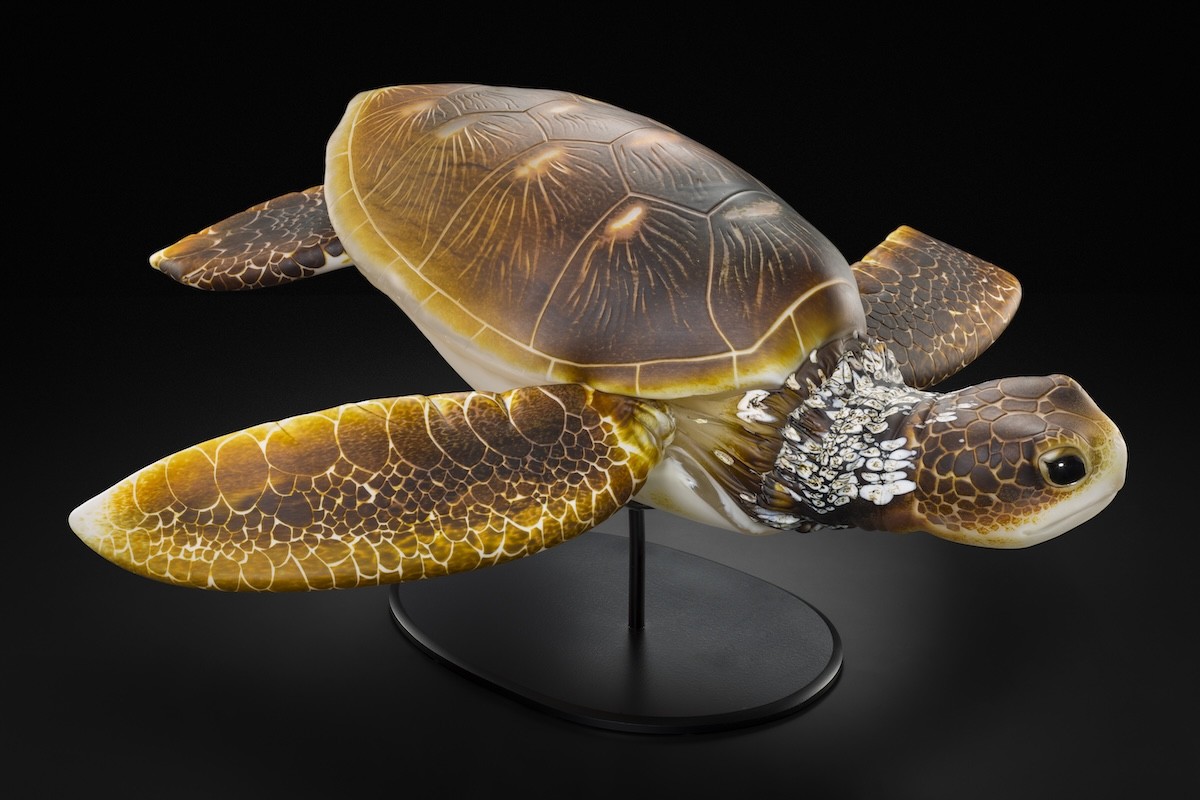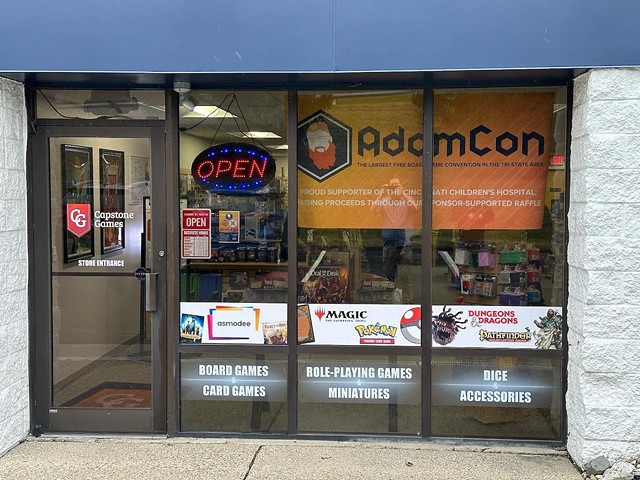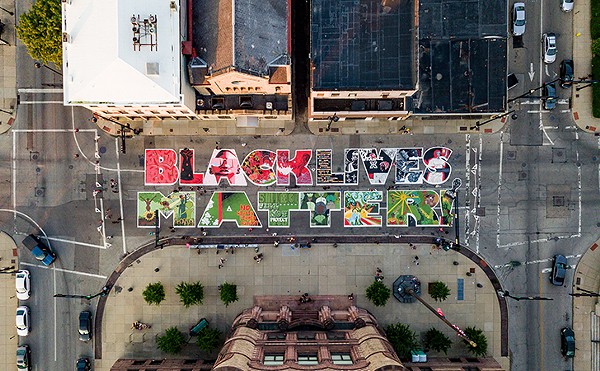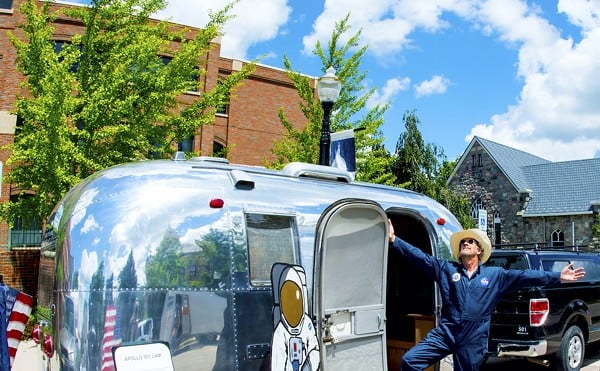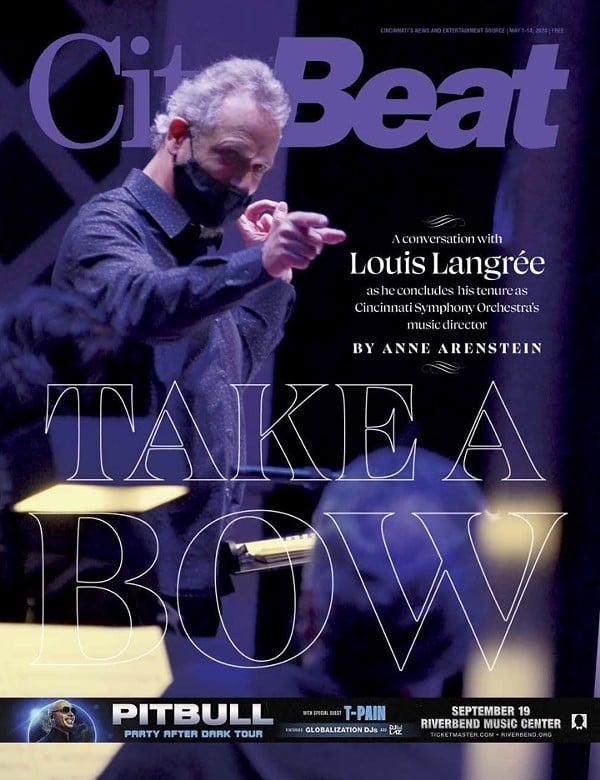This story is featured in CityBeat's Jan. 10 print edition.
A new exhibit at the Cincinnati Art Museum is celebrating the culture and achievements of Native American and Indigenous Pacific-Rim artists through a non-traditional medium.
Clearly Indigenous: Native Visions Reimagined in Glass is a striking display of more than 100 glass works from 33 artists that exemplify Indigenous traditions and knowledge through the medium of glass. Interpretations of Indigenous basket, textile and pottery practices are expertly crafted through various glass-working techniques and styles.
The pieces range from grand sculptures and complex installments to intricate vases and glass mosaics, creating a scope of art and artists that represent 26 Native nations from the United States and Canada.
Clearly Indigenous is curated by Dr. Letitia Chambers. It originated at the Museum of Indian Arts & Culture in Santa Fe, New Mexico and was influenced by the Native Glass Art Movement of the 1970s. The movement was sparked by Lloyd Kiva New (Cherokee) – founder of the Institute of American Indian Arts – when he initiated a collaboration with the Rhode Island School of Design to create an art program that included glass-blowing courses. The program sparked interest in generations of Indigenous artists to work with glass, which inspired Dr. Chambers to write a book and curate an exhibition on the subject.
“Glass is not a traditional medium for American Indian artists,” Dr. Chambers tells CityBeat. “Each new generation of Native artists moves the art of previous generations forward as artists honor past traditions while finding their own creative voices and adopt new methods and materials as they become available. Native artists who have chosen to work in glass have created an incredible body of work which combines the intellectual content associated with the expression of their cultures with the beauty and technical expertise of studio glass artists.”
The traveling exhibit follows a book by Dr. Chambers, which details how glass art was introduced to Native artists and the beginnings of the contemporary Native American art movement at the Institute of American Indian Arts. The book shares a title with the exhibit and was published by the Museum of New Mexico Press in 2021.
“The book is organized around the artists and their methods and techniques, as well as their histories,” Dr. Chambers says. “In choosing images of the artists’ works to be included in the book, I was struck by the strong intellectual content of the work, and so I chose to build the exhibit around that content, rather than organizing it by artist.”
As a result, Clearly Indigenous is a powerful collection of work that elevates traditional art, emphasizing its messages and beauty through various glass-working methods. Although fragile in nature, Clearly Indigenous glass works transcend their anatomy, yielding breathtaking, meaningful compositions that have been blown, cast, slumped, sand-blasted, melted or kiln-fired, among other methods. The glass constructions can also be ground, etched, engraved, polished or fused.
Works range from grand installations to delicate statements. Sculptures that embody the sacred animals of the “land, air and sea,” are prominent throughout the gallery along with baskets, vessels, bowls, statues, vases and astonishing pieces that mock fabric and woven natural elements.
The gallery’s lighting in Clearly Indigenous is also used to display the striking nature of the art. Not only can glass be transparent or translucent, it can also be solid or layered yet still reflect and absorb light in ways that inflate the works’ already impactful presence.
“Lighting of glass art is so important to its visual effect,” Dr. Chambers says. “Focusing the light so that it is the objects and their shadows that are highlighted, rather than the case or the room, is a key to the display of glass art.”
Preston Singletary of the Indigenous Tlingit tribe of Alaska created one of the most eye-catching, graceful pieces of the collection. Lighting creates movement and repetition surrounding “Killer Whale Hat,” Singletary’s piece which consists of blown and sand-carved glass that resembles an upside-down, wide-brimmed hat. The work’s golden hue deepens at the rim, while the shallow bowl bears an elegant pattern, which sails onto the brim and is repeated in soft shadows where the light peaks through the design.
A handful of Singletary pieces appear in Clearly Indigenous, but “Killer Whale Hat” is part of a larger Singletary collection of glass works inspired by traditional Tlingit hats. Another outstanding Singletary inclusion is “Raven Steals the Sun,” which is another impressive display of blown and sand-carved glass that appears to be anything but the delicate medium. The raven’s head is black with deep red reliefs that outline its features. At a glance, it appears to be a wood carving and prompts wonder at how an artist can accomplish such a creation out of glass.
According to a placard in the exhibit, artists depict creatures as decoration on practical objects to display respect for birds and other animals. In origin stories of some northwest coast nations, the raven is said to have brought light to the world.
“The artistry and beauty of the objects in the exhibit contribute to the first impression of the viewer. The aesthetics of the exhibit certainly create a wow factor. But the ultimate message conveyed relates to values inherent in indigenous cultures,” Dr. Chambers said. “This can be seen in the importance of caring for living things and the world we live in as depicted by the sections focusing on the creatures of the land, sea and sky. Honoring the ancestors is an important value in Native cultures and there is a section devoted to this more spiritual content. A number of the objects reflect the bridging of two worlds, that of tribal tradition while living in today’s contemporary society.”
Many of the works inspect contemporary issues that are connected to Native identities such as social and environmental justice. In partnership with the Urban Native Collective, the Conversations Gallery on the first floor of the museum is dedicated to generating dialogue and a deeper understanding of Indigenous People’s contemporary experiences. One might re-interpret “Raven Steals the Sun,” for more than its superficial beauty after considering the information available in the Conversations Gallery.
This extension of Clearly Indigenous will be on display throughout the run of the exhibit. The REDress Project, a part of which is on view in the Conversations Gallery, calls attention to thousands of missing or murdered Aboriginal women across Canada. Placards in the gallery highlight resources and ways to take action against these injustices.
Programming surrounding Clearly Indigenous is scheduled throughout February and March. On Feb. 1, Dan Friday – a member of the Lummi Nation and a Seattle-based artist who has numerous works and collaborations included in the exhibit – will visit the Cincinnati Art Museum.
“Dan Friday has a compelling personal story, as well as being a leading glass artist,” Dr. Chambers says. “His totems in glass carry on his own family’s tradition as his grandfather's carved totems of wood.”
Friday’s lecture, Future Artifacts: Artist Talk with Dan Friday, will explore how he combines Native traditions and contemporary glasswork.
“I hope viewers go beyond the stunning visual effect of this body of artworks to appreciate the values of the cultures that created them,” Dr. Chambers says. “For viewers who are not familiar with Native cultures, it may be an introduction to American Indians’ contemporary cultures, rather than seeing them as artifacts of the past.”
Clearly Indigenous: Native Visions Reimagined in Glass is on view in the Thomas R. Schiff Gallery at the Cincinnati Art Museum through April 7. Info: cincinnatiartmuseum.org.
Subscribe to CityBeat newsletters.
Follow us: Apple News | Google News | NewsBreak | Reddit | Instagram | Facebook | Twitter | Or sign up for our RSS Feed

